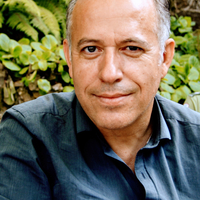ivane javaxiSvilis saxelobis Tbilisis saxelmwifo universitetis
saqarTvelos istoriis institutis Sromebi. XIX
Tbilisi. 2023
saerTaSoriso prezentacia International Conferences
International Scientific Conference
“Mariam Lordkipanidze – 100”
December 23, 2022
Report by Leri Tavadze (TSU) and Tedo Dundua (TSU)
On December 23, 2022 Institute of Georgian History at the Faculty of
Humanities, Ivane Javakhishvili Tbilisi State University, organized the
International Scientific Conference, “Mariam Lordkipanidze – 100”.
2022 marked the 100th anniversary of the birth of academician Mariam
Lordkipanidze (1922-2018), head of the Department of Georgian History at
Ivane Javakhishvili Tbilisi State University and public figure. Her activities are
outstanding from different perspectives. Mariam Lordkipanidze is an author of
more than 200 scientific works. For many years she acted to protect the
Georgian language and history of Georgia, as a discipline. For her
achievements, Mariam Lordkipanidze received the highest award of the
Georgian Orthodox Church, the Gold Order of St. George. TSU Institute of
Georgian History dedicated its annual conference to her 100th anniversary and
invited international participants from Bulgaria, Poland, Estonia and Romania.
The conference included two sessions and both of them took place in
the first building of Ivane Javakhishvili Tbilisi State University. International
participants of the conference took part in this event via Zoom while the
Georgians presented their reports on the live sessions. The working languages
of the conference were Georgian and English.
Professor Tedo Dundua, director of the Institute of Georgian History,
opened the first session. He welcomed the guests, local and international
participants and students who attended the session. Welcome speech was
delivered also by TSU Acting Rector, Professor Jaba Samushia.
Ketevan Nadiradze, Associate Professor at TSU, spoke about the life
and activities of Mariam Lordkipanidze (Mariam Lordkipanidze – 100). This
was the first and lengthy speech from a former disciple and colleague about
Mariam Lordkipanidze, who taught numerous students at TSU and mentored
several generations of historians at the same university.
462
International Scientific Conference “Mariam Lordkipanidze – 100”
December 23, 2022
Report by Leri Tavadze (TSU) and Tedo Dundua (TSU)
Akaki Chikobava, invited lecturer at TSU, talked about Economic
History of Peasants in the Works of Mariam Lordkipanidze. Economic life of
the peasants, taxes imposed on them and issues of class struggle in Feudal
Georgia were analyzed based on the works of Mariam Lordkipanidze.
Vessela Atanassova, researcher from Institute of Balkan Studies with
Center of Thracology (Bulgarian Academy of Sciences), presented Bone
Figurines of Isis Lactans from the Late Roman Period. Report was about bone
figurines of Isis Lactans discovered on the territories of the Roman Empire,
dated to the late Roman period. Comparisons were drawn with the Georgian
reality of the same era.
Natia Phiphia, Assistant Professor at TSU, and Ekaterine Kobakhidze,
Associate Professor at TSU, gave a speech about Parthian War of Lucius
Verus and Iberians. Some Latin inscriptions found in Rome shed a light on the
Parthian expedition of Marcus Aurelius’ co-ruler, Lucius Verus (161-169).
Latin sources and the Georgian “Life of Kartli” were used for partial
reconstruction of the Parthian campaign of Lucius Verus and the RomanGeorgian relations.
Tedo Dundua and Natia Phiphia presented Georgian (Iberian)
Imitations of the Roman Coins. Aurei and Augustan denarii formed a bulk of
the money in circulation in Kartli/Iberia (East, South and Southwest Georgia).
From the midst of the 3rd c. the Roman gold coins were locally imitated, as well
as the celebrated denarius of Augustus with Gaius and Lucius Caesars on
reverse. The reason was a severe Imperial crisis of the 3rd c. which limited a
supply of the Roman money for Iberia. On the other hand, Iberian kings were
facing local demands while issuing these debased imitations. Western Georgia
(Colchis/Lazica in the past) has some specific gold hybrids found there and a
small number of Augustan imitations. It seems that there were no local
imitations of the Roman coins circulating in Armenia and Albania (modern
Azerbaijan).
Nino Silagadze, Associate Professor at TSU, gave a speech Towards
Attribution and Dating of Three Silver Cups from Samtskhe-Javakheti
Historical Museum. The rise of the Sasanian state at the beginning of the 3rd
century was of great importance for the historical development of the South
Caucasian countries, and particularly, for the Kartli/Iberia (East and South
Georgia) kingdom. Relations with its great and powerful neighbor included
various spheres of political, social and cultural life of the country. Particular
category of applied art – silver cups, bowls, dishes etc. – called Iberian-
463
saqarTvelos istoriis institutis Sromebi. XIX
Sassanian silverware, was developed in the workshops of Kartli/Iberia by the
Georgian masters while adhering to the style, images, and ornamentation of
Sasanian art. More samples have been identified.
Marcin Wieczorek, PhD student from Adam Mickiewicz University
(Poznań), overviewed Mocheresis – the Lost City in Lazica. Localization
Problem. Author discussed possible localization of Mocheresis, which is
mentioned in the Byzantine sources from the Age of Justinian I. The city was in
Western Georgia, but exact localization is debatable. Overview of
historiography was presented and his own suggestion was put forward.
Second session was chaired by Leri Tavadze, Assistant Professor at
TSU. He presented Gregory I Hamam and the Restoration of Kingship in
Hereti: Kingdom of Arran in the Second Half of the 9th Century. The
presentation was about restoration of kingship in Caucasian Albania, referred to
as Hereti by the 9th century Georgian sources. Kingdom was called Hereti as the
political center was established to the West of Caucasian Albania, i.e. in Hereti.
Kings of Hereti were officially called “King of Rani” (Parthian “Ardhan”; Arab.
“Arran”), hence they had a Caucasian Albanian political affiliation despite a
large Georgian population, especially in Hereti. The one who reestablished
Caucasian Albanian kingdom in the lands of Hereti was Gregory Hamam in 886
as a response for the establishment of the Armenian kingdom in the same year.
From the Crusader-Georgian Relations in the 12th Century was a
report of Mamuka Tsurtsumia, independent researcher. It was about the
Crusader sources on Georgia. One source that was presented in his presentation
is a charter from the Order of Hospitallers. This charter is donative. Certain
parts of this charter are not entirely clear, especially the piece of information
that claims the lands are donated to a certain Georgian whose name is Saba in
the Holy Land. Presentation dealt with location of lands Saba received, his
identification and localization of Shehan, where new Georgian monastery was
founded.
Apolon Tabuashvili, Associate Professor at TSU, described Issue of
Giorgi XII’s Accession to the Throne, the events of 1798. Russian sources
were analyzed in his presentation, as well as the Georgian author Platon
Ioseliani. He talked about the conflict between two “parties” in East Georgia,
largely instigated by the Russians.
Dimitri Shvelidze, Associate Professor at TSU, spoke about Four
Parties and Four Program Visions in the Constituent Assembly of Georgia
(March, 1919). The programs of four major parties of the Democratic Republic
464
International Scientific Conference “Mariam Lordkipanidze – 100”
December 23, 2022
Report by Leri Tavadze (TSU) and Tedo Dundua (TSU)
of Georgia were analyzed. Social democrats thought of socialism to be
establish, but after democratization of Georgia. Independence of Georgia was
the main issue for social federalists. Socialist revolutionary party cared much
about the lower classes. And national democrats were against socialism.
Nikolai Javakhishvili, Associate Professor at TSU, talked about Role of
the Georgian Emigration in Survival of the Jews during the World War II. He
dealt with Georgian-Hebrew relations during World War II. Georgians suffered
hardships in emigration, but still some of them saved not only the Georgian
Jews, but also other Jews.
Tengiz Simashvili, Professor at Telavi State University, described
Lezgins (Khunzakhians/Avars) in Kakheti and the Soviet Regime in 19401960s (According to Archival Materials). The presentation dealt with the issue
of the Lezgins (better known as Avars) living in Kakheti (East Georgia). They
had the houses and arable lands both in Kakheti and Dagestan. But their
permanent living area was not defined. The Soviet authorities decided to give
the population freedom of choice for the place of residency. Nazi German
invasion of 1941 prevented the implementation of this process. As a result of
the events of March 1944, known as the deportation of the population from the
Checheno-Ingush Autonomous Soviet Socialist Republic, former ChechenoIngush ASSR joined Dagestan ASSR, hence the Lezgins were taken from
various places, including Georgia, namely from Kvareli district, and settled
there. Checheno-Ingushetia became their new place of residence, still some of
the Lezgins trying to move back to Georgia.
Sergei Tambi, researcher from the University of Tartu, gave a speech
On the Days of Culture of Estonia in Georgia (in 1971). Georgian SSR and
Estonian SSR were parts of the USSR., hence their relations were intensive.
Days of Estonian culture in Georgia were the most vivid examples of mutual
relationship between two nations.
Mircea-Cristian Ghenghea, lecturer from Alexandru Ioan Cuza
University of Iaşi, presented Anthimus of Iberia – Romanian Bibliographical
Approach (1990-2022). He spoke about the issue of Anthimus of Iberia in
Romanian academic literature from the 1990s to the present. Anthimus of Iberia
(c. 1650-1716) was Metropolitan of Bucharest and an important public figure in
Romania. His Georgian ethnicity played an important role in reshaping the
Georgian-Romanian relationship. His activities are widely researched in
Romania.
465
International Scientific Conference "Mariam Lordkipanidze -100". December 23, 2022. Report by Leri Tavadze and Tedo Dundua
and public figure. Her activities are outstanding from different perspectives. Mariam Lordkipanidze is an author of more than 200 scientific works. For many years she acted to protect the Georgian language and history of Georgia, as a discipline. For her achievements, Mariam Lordkipanidze received the highest award of the Georgian Orthodox Church, the Gold Order of St. George. TSU Institute of Georgian History dedicated its annual conference to her 100 th anniversary and invited international participants from Bulgaria, Poland, Estonia and Romania. The conference included two sessions and both of them took place in the first building of Ivane Javakhishvili Tbilisi State University. International participants of the conference took part in this event via Zoom while the Georgians presented their reports on the live sessions. The working languages of the conference were Georgian and English. Professor Tedo Dundua, director of the Institute of Georgian History, opened the first session. He welcomed the guests, local and international participants and students who attended the session. Welcome speech was delivered also by TSU Acting Rector, Professor Jaba Samushia. Ketevan Nadiradze, Associate Professor at TSU, spoke about the life and activities of Mariam Lordkipanidze (Mariam Lordkipanidze-100). This was the first and lengthy speech from a former disciple and colleague about Mariam Lordkipanidze, who taught numerous students at TSU and mentored several generations of historians at the same university....Read more


















